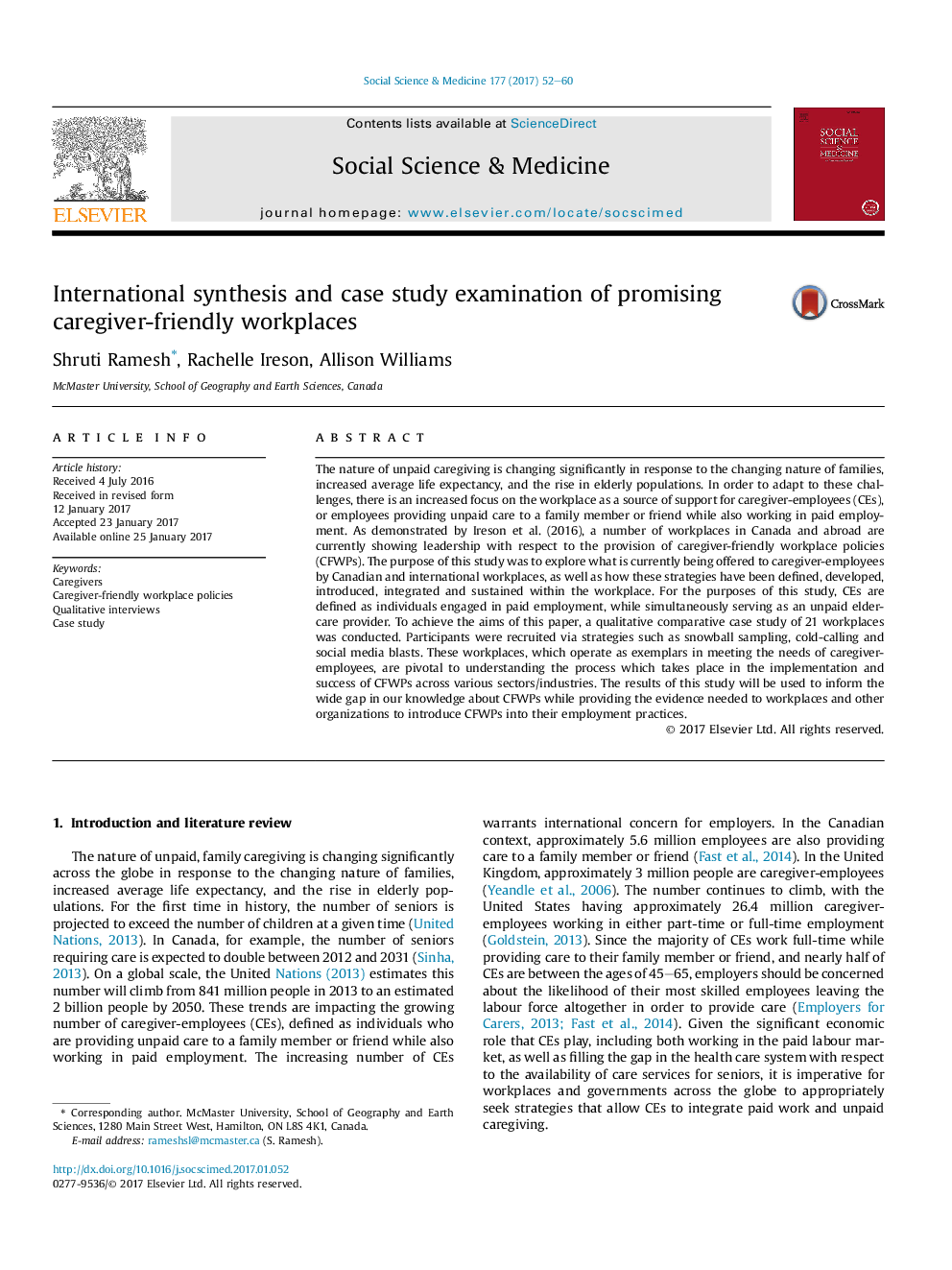| Article ID | Journal | Published Year | Pages | File Type |
|---|---|---|---|---|
| 5046711 | Social Science & Medicine | 2017 | 9 Pages |
â¢Caregiver-employees (CEs) are a group of increasing interest for employers.â¢The majority of employers do not yet have formalized policies for caregiver-employees.â¢Employers acknowledged economic and social incentives for being caregiver-friendly.â¢CE barriers to seeking support include stigma and fear of professional repercussions.â¢Barriers can be ameliorated through promoting supportive workplace culture.
The nature of unpaid caregiving is changing significantly in response to the changing nature of families, increased average life expectancy, and the rise in elderly populations. In order to adapt to these challenges, there is an increased focus on the workplace as a source of support for caregiver-employees (CEs), or employees providing unpaid care to a family member or friend while also working in paid employment. As demonstrated by Ireson et al. (2016), a number of workplaces in Canada and abroad are currently showing leadership with respect to the provision of caregiver-friendly workplace policies (CFWPs). The purpose of this study was to explore what is currently being offered to caregiver-employees by Canadian and international workplaces, as well as how these strategies have been defined, developed, introduced, integrated and sustained within the workplace. For the purposes of this study, CEs are defined as individuals engaged in paid employment, while simultaneously serving as an unpaid elder-care provider. To achieve the aims of this paper, a qualitative comparative case study of 21 workplaces was conducted. Participants were recruited via strategies such as snowball sampling, cold-calling and social media blasts. These workplaces, which operate as exemplars in meeting the needs of caregiver-employees, are pivotal to understanding the process which takes place in the implementation and success of CFWPs across various sectors/industries. The results of this study will be used to inform the wide gap in our knowledge about CFWPs while providing the evidence needed to workplaces and other organizations to introduce CFWPs into their employment practices.
